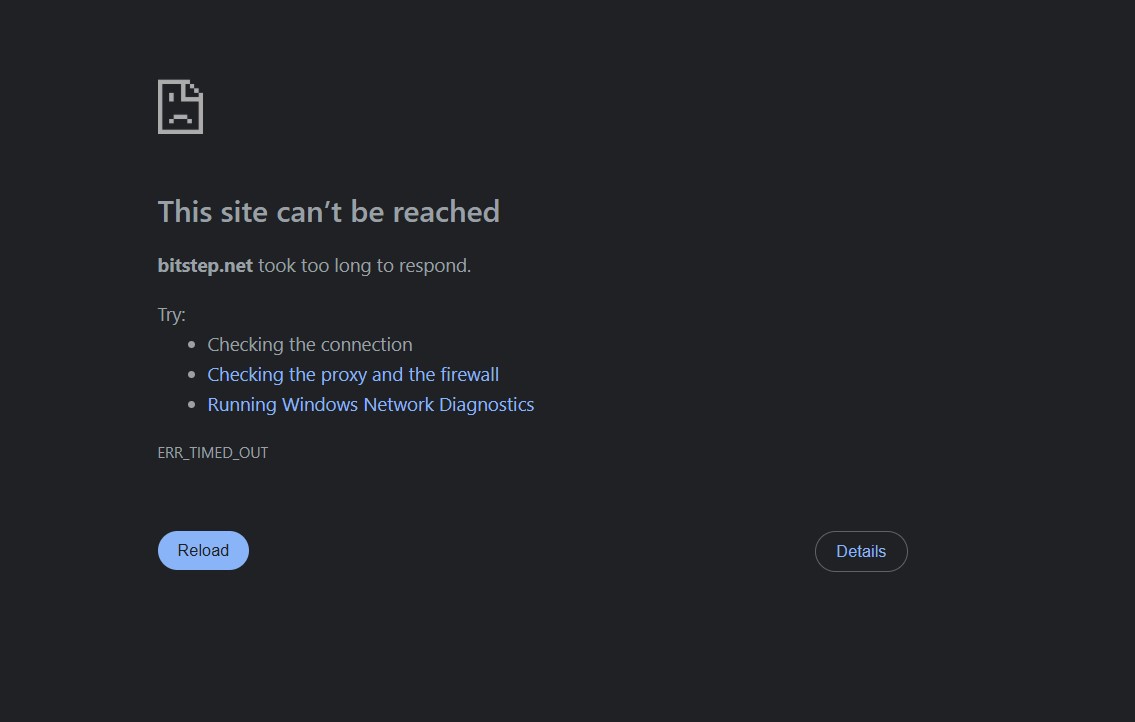BitStep.net Scam Review -A Deceptive Lure
Opening — the tempting demo that quietly tightened the trap (investor vignette)
Marcus found BitStep.net after a slick social post: “Automated crypto strategies — passive income, zero effort.” The landing page looked modern, the demo dashboard showed steady gains, and a chat popped up offering a free account review. An affable “account specialist” walked him through a tidy onboarding flow and encouraged a modest test deposit to “see how quickly the system works.”
At first, everything felt reassuring. Small wins appeared on the dashboard and a tiny withdrawal cleared, which reduced Marcus’s skepticism. Encouraged, he transferred a larger sum. That’s when the script changed: new verification requests, a surprise “processing fee,” and a sudden slowdown in responses. Requests for larger withdrawals were met with evasive language and shifting timelines. Marcus’ experience follows a pattern frequently seen in risky platforms — smooth intake, early wins to build trust, then escalating friction when money needs to come out. Below is a practical, evidence-oriented breakdown of the red flags BitStep.net presents and why that pattern matters.
Short verdict (risk-based)
BitStep.net displays a cluster of operational and behavioural warning signs commonly associated with unscrupulous or high-risk trading operations: limited verifiable corporate details, masked domain ownership, persuasive marketing designed to accelerate deposits, and repeated reports of withdrawal friction after deposits grow. Taken together, these indicators create a materially elevated risk profile. This is a risk-based assessment intended to highlight testable signals, not a legal allegation.
1) Presentation vs. provable facts
Professional design and persuasive UX are easy to buy; trust requires verifiable facts. Legitimate trading platforms pair glossy interfaces with concrete, checkable disclosures: a legal company name and registration number, physical address, named executives, regulator licence details, and clear custodial partners for client funds.
BitStep.net invests heavily in presentation — performance charts, testimonials and VIP tiers — but offers limited verifiable corporate information. Where a licence number or custodian name would appear on a trustworthy site, BitStep.net’s public pages lean heavily on marketing language and vague claims. That gap turns style into persuasion, not proof.
2) Ownership opacity and domain signals
A simple practical test is: who can you hold accountable? Red flags include WHOIS privacy protection, recently registered domains, and contact details that point to generic forms or mail-forwarding services rather than a real office.
The BitStep.net footprint exhibits several of those opacity traits. Masked domain ownership and minimal traceable corporate identifiers reduce accountability and make it harder to pursue complaints if funds become inaccessible. Entities that conceal ownership are also easier to rebrand or vanish quickly, which raises the operational risk for customers.
3) Regulation and oversight — the missing safety net
Regulation provides enforceable consumer protections: client money segregation, audits, minimum capital requirements and complaint channels. Reputable platforms display regulator names and licence numbers so prospective clients can confirm them independently.
BitStep.net’s public materials do not include obvious, checkable licences from recognised financial authorities. Vague statements about “compliance” or “regulated partners” are not equivalent to being directly regulated. Without visible, verifiable oversight, customers lose a core layer of protection and practical recourse.
4) The onboarding funnel — engineered to scale deposits
Problematic platforms often follow a predictable funnel:
-
Quick, frictionless signup and immediate human outreach.
-
Small early payouts or demo balances to build trust.
-
Persistent nudging to upgrade to higher tiers requiring larger deposits.
-
Suddenly escalating verification demands when meaningful withdrawals are requested.
BitStep.net’s flow mirrors this sequence: swift human contact, VIP tier pitches and limited-time bonuses. Those tactics are effective at converting initial interest into larger deposits before users have time to verify operational integrity or test withdrawal mechanics.
5) Deposit-easy / withdrawal-hard — the most actionable test
The single most practical litmus test for any broker is how it treats money in versus money out. The worrying pattern looks like this:
-
Deposits are accepted across multiple rails and processed quickly.
-
Small withdrawals, or staged payments, are allowed to build confidence.
-
Larger withdrawal requests trigger additional “compliance” steps, surprise fees, or indefinite delays.
-
Communication becomes slow or templated after payout requests.
Reports tied to platforms with BitStep.net’s profile consistently describe this asymmetry. If you observe “easy in, hard out,” treat it as a very strong operational warning: the infrastructure is optimised for intake, not for reliable payouts.
6) Sales psychology and manipulation
BitStep.net uses proven persuasion levers: urgency (limited VIP slots), social proof (testimonials), authority cues (claims of “proprietary algorithms”), and a personal touch via account managers. Those techniques reduce deliberation and make rapid, escalating deposits more likely.
Understanding the behavioural hooks helps explain why even cautious people sometimes accelerate exposure quickly — small early wins and friendly outreach make escalating investment feel rational, even when independent verification would suggest caution.
7) Terms, fees and contractual levers
The small print is where practical control resides. Watch for contract clauses that grant the operator broad discretion to freeze accounts, impose retroactive processing fees, or tie bonuses to unrealistic turnover that effectively locks funds.
If BitStep.net’s terms include such discretionary language, those contract levers are the likely mechanisms used when users request withdrawals. Hidden or late-appearing fees that only show up at payout time are among the most common tactics used to extract extra money.
8) Community signals and complaint patterns
Independent complaints and user discussion boards are powerful early warning systems. When many users describe similar experiences — account freezes, escalating document demands, surprise fees at withdrawal, and disappearing support — the resulting pattern carries weight even without single definitive proof.
BitStep.net’s public chatter shows recurring themes consistent with the broader pattern described here: early trust-building followed by increasing barriers at payout. Repetition across independent users strengthens the practical inference of systemic operational risk.
9) Technical fragility and rebrand risk
Technical metadata matters: short domain history, WHOIS privacy, and hosting arrangements similar to other ephemeral finance sites make rebranding or abandonment simpler for operators. That fragility raises the probability that a problem platform can quickly move on, leaving customers with difficulty tracing funds.
BitStep.net’s combination of a short public footprint and masked technical details increases the practical chance of sudden rebrand or disappearance — a significant factor when evaluating long-term safety.
10) Quick red-flag checklist — use this before risking funds
Before depositing with BitStep.net, run this practical filter:
-
Is the legal company name and registration number published and independently verifiable?
-
Can you confirm a licence with a recognised financial regulator?
-
Are custodial banks or third-party auditors named and checkable?
-
Do independent users document successful large withdrawals (not just tiny tests)?
-
Is domain ownership transparent or masked behind privacy protection?
-
Are withdrawal terms, fees and bonus conditions clearly disclosed in advance?
-
Do account managers pressure you to upgrade before you’ve tested withdrawals at scale?
-
Do the terms include broad discretionary powers favouring the operator?
If multiple answers are “no,” your exposure is materially elevated.
Analytical conclusion — why the pattern matters
No single anomaly by itself proves fraudulent intent: startups can be new, and marketing can be over-zealous. The practical danger is the accumulation of deficiencies: masked ownership, absence of verifiable regulation, persuasive upsell mechanics, curated on-site “proof” rather than auditability, and a consistent deposit-easy/withdrawal-hard narrative. BitStep.net displays several elements of that risky constellation.
This review is a pragmatic, risk-based analysis intended to surface testable signals readers can use to protect capital. Until BitStep.net publishes transparent, independently verifiable company registration, regulator licences, named custodial arrangements and a demonstrable history of timely, large withdrawals, it should be treated as high-risk and approached with extreme caution.
Report BitStep.net Scam and Recover Your Funds
If you have lost money to BitStep.net Scam, it’s important to take action immediately. Report the scam to Jayen-consulting.com, a trusted platform that assists victims in recovering their stolen funds. The sooner you act, the better your chances of reclaiming your money and holding these fraudsters accountable.
Scam brokers like BitStep.net continue to target unsuspecting investors. Stay informed, avoid unregulated platforms, and report scams to protect yourself and others from financial fraud.
Stay smart. Stay safe.






